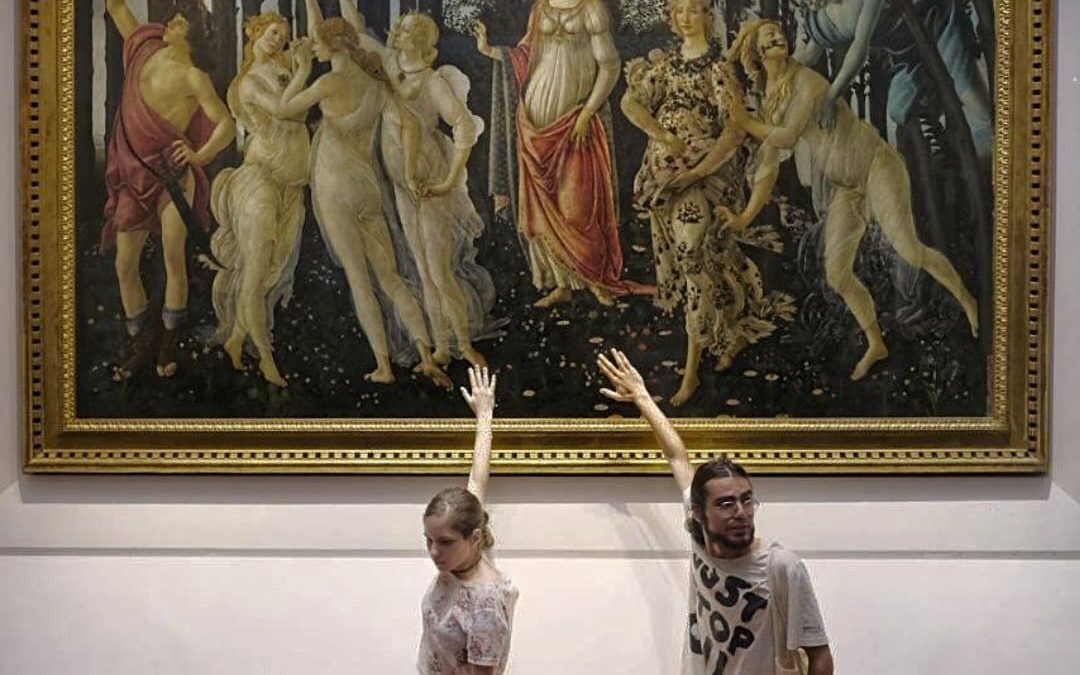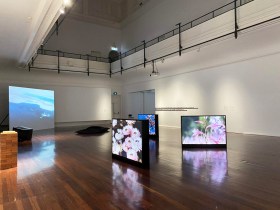Say what? On 22 July, two climate activists glued themselves to the glass barrier of Botticelli’s Primavera (c. 1480) at the Uffizi Gallery in Florence, Italy.
This seemingly absurd act is not an isolated case. It follows a recent series of similar actions across institutions in Europe and the UK where artworks including Vincent Van Gogh’s Peach Trees in Blossom (1889), Horatio McCulloch’s My Heart’s in the Highlands (1860) and John Constable’s The Hay Wain fell victim, according to Hyperallergic.
The protests come at a time when the death toll of global warming is rapidly increasing, Europe is experiencing unprecedented heatwaves, and fires/floods are still fresh in our minds.
Aside from the fact that none of the artworks were damaged by protestors, a relief for institutions and the public alike, why are climate activists targeting museums and galleries, and more specifically artworks, as a medium for their protests?
Read: The time is now: Climate awareness in museums is a must
The aim is not to damage the works; in fact, it comes down to the notion of care. The protestors at Uffizi belong to the activist group Ultima Generazione (Last Generation) which released a statement pointing out that there are more than 500 botanical species depicted in Botticelli’s painting – 500 species we risk losing if we don’t take the same amount of care towards the environment as we do towards the restoration and conservation of a painting.
Ultima Generazione‘s list of demands, directed at the Italian Government, includes halting the reopening of coal power plants, ending natural gas drilling, and investing in a significant increase of solar and wind energy.
But did this protest actually generate discussions around climate action or is all attention-seeking, shifting the focus to the protestors’ methods rather than their message?
Public reception is mixed: some remind us that cultural institutions are rarely neutral bystanders and should be subject to the same scrutiny as other societal institutions; others fail to see the relevance and mock the protestors’ efforts as futile.
Many who witnessed the action took photos or videos, but it’s difficult to tell whether they did so to spread the protestors’ message or simply to contribute to our social media obsession.
Art and protests are never separate
From the advocacy of prominent American artists during the AIDS epidemic in the 1980s to First Nations artist Richard Bell’s Embassy (2013–) about the Aboriginal rights movement and which is still exhibited internationally, art has always been a vehicle for advocacy and protest.
Even placards and banners are now kept in museums to remind us of the courage and efforts of our predecessors who shaped our culture today.
Read: 9 examples of Australian art made in protest
It shows that art and the institutions that act as its custodians are never ’irrelevant’ – being and staying relevant to society’s changes and struggles are the very elements that ground them.
It’s also another reminder of institutional compliancy towards environmental destruction, often hidden behind walls of sponsorship and complicated relationships with board members.
In an earlier lecture on institutional change, Laura Raicovich, author of Culture Strike: Art and Museums in an Age of Protest said: ’I see protests as a form of radical care for cultural spaces; if people didn’t care about what the cultural sphere did, they wouldn’t bother to protest. So listen deeply to what that protest is telling you or your institution.’
Again it’s about care, for our institutions and for our environment.
As with any provocative protest, many criticise these protestor’s methods in targeting priceless paintings.
But when it’s a climate crisis versus stubbornly ignorant leadership, the goal is to at least be seen and heard.






